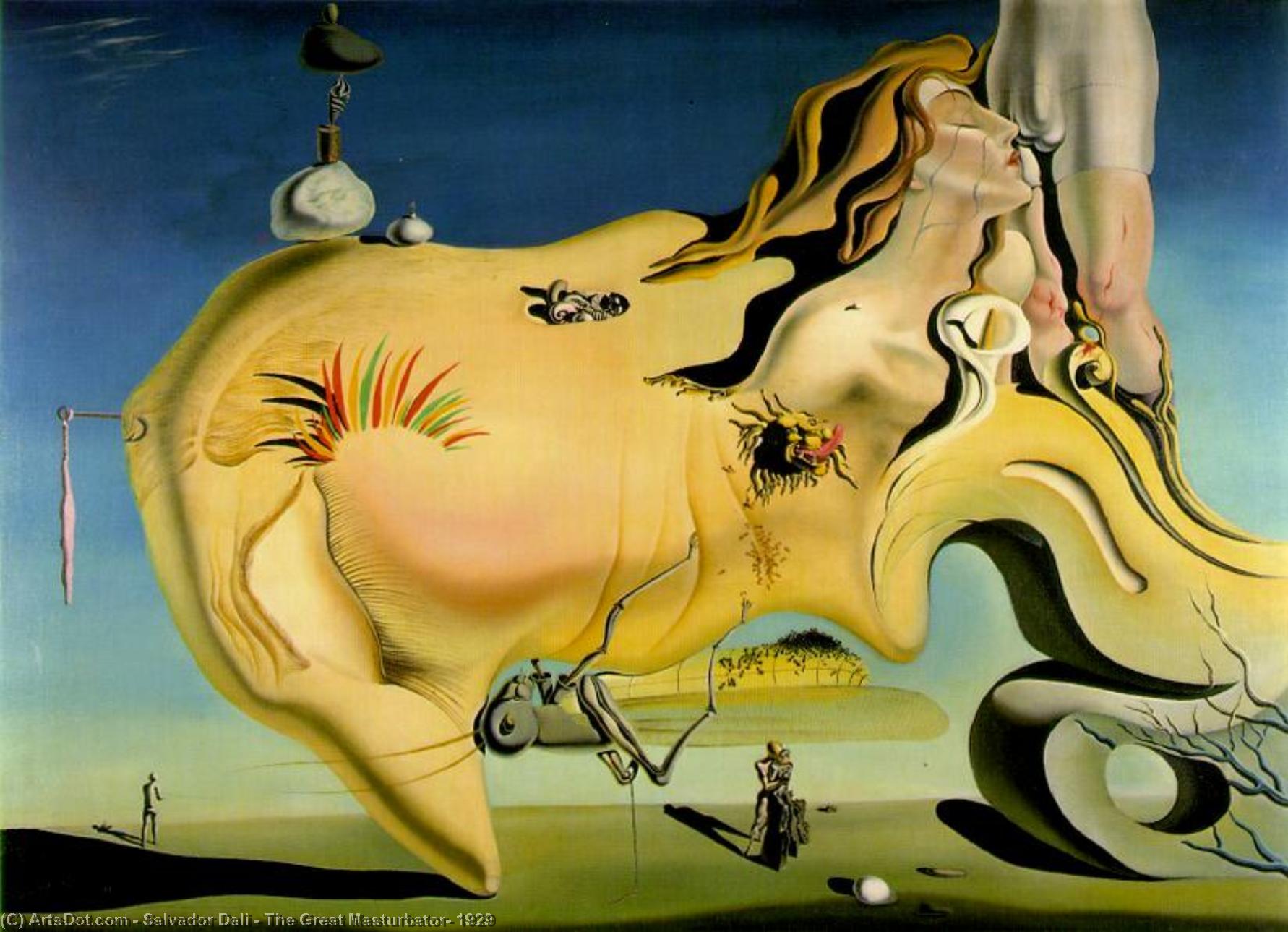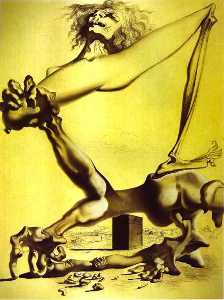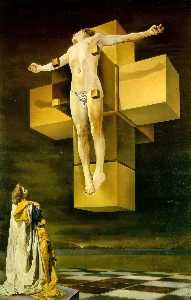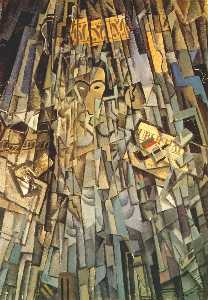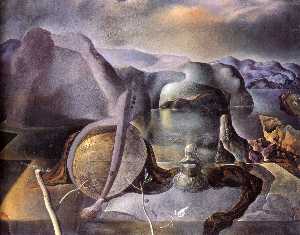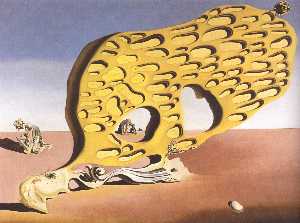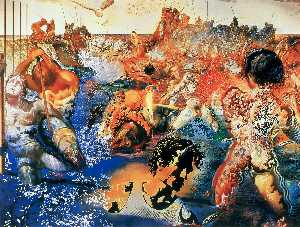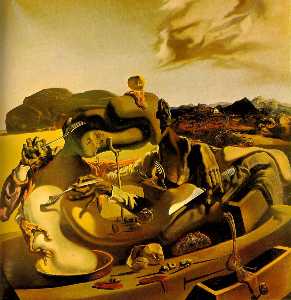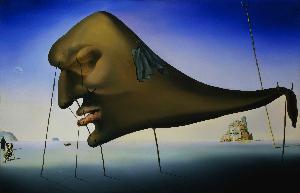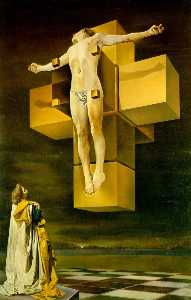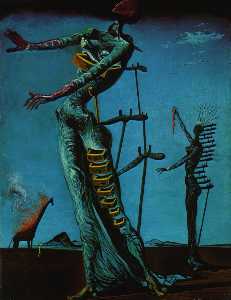Umjetnik: Salvador Dali
Stil: Surrealism
Teme: Life
Tehnika: Oil
The Great Masturbator (1929) is a painting by Salvador Dalí executed during the surrealist epoch, and is currently displayed at Museo Nacional Centro de Arte Reina Sofía, Madrid. The center of the painting has a distorted human face in profile looking downwards, based on the shape of a natural rock formation at Creus along the sea-shore of Catalonia. A similar profile is seen in Dalí's more famous painting of two years later, The Persistence of Memory. A nude female figure (resembling Dalí's then new muse, Gala) rises from the back of the head; this may be the masturbatory fantasy suggested by the title. The woman's mouth is near a thinly clad male crotch, a suggestion that fellatio may take place. The male figure seen only from the waist down has bleeding fresh cuts on his knees. Below the central profile head, on its mouth, is a locust, an insect of which Dalí had an irrational fear. (The insect has sometimes been misidentified as a grasshopper due to poor translations of Dalí's early writings.) A swarm of ants (a popular motif in Dali's work) gather on the locust's abdomen, as well as on the prone face. In the landscape below, three other figures are arranged, along with an egg (commonly used as a symbol of fertility) and sparse other features. Two of the characters in the landscape are arranged in such a way as to cast a long single shadow, while the other character is seen hurriedly walking into the distance on the peripheries of the canvas.
Umjetnik |
|
|---|---|
Preuzimanje |
